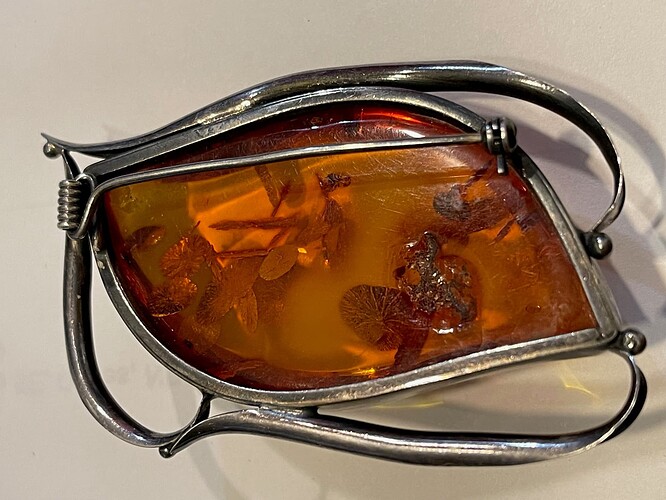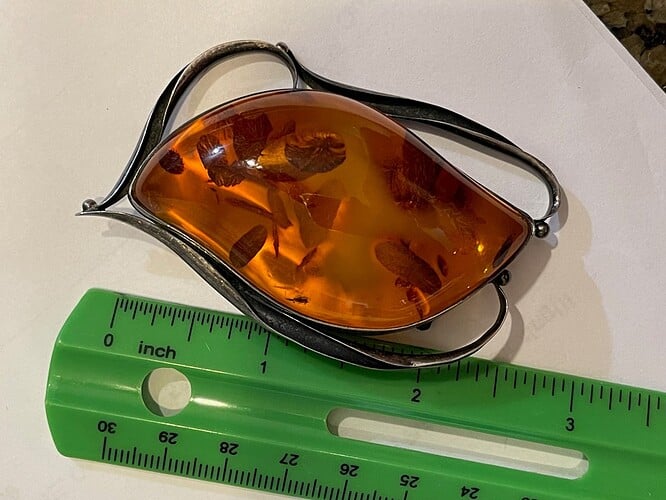I bought this from a 94 year old woman who said it came from Russia with her and her family when they immigrated from Russia in 1914. The metal does not test as silver. I have had 2 “so called experts” say it is fake because it is so clear. Three others say it is authentic. The pendant weighs 36 grams. I’m getting old now, and want to know if it is real; and where would be the best place to market it.
Nancy,
Welcome to the community!
About the broach… without having the piece in hand, it is very difficult to say one way or another, if the amber is real. If the piece was in the family, when they migrated in 1914, it is plausible that it could be a real piece of Baltic amber. However, there are many costume pieces from that era as well. From the images, I do not see characteristic inclusions (mainly bubbles and veils) that are common with natural amber. This does not conclusively say it is a simulant, since the artisan could have shaped the stone to remove them.
Since the metal has not tested as silver, this tends to lean towards the costume side. It looks somewhat like Nickel and the patina coloration looks like nickel as well. This does not exclude the piece entirely from authentic because there are other silvery metals used from that era.
In the images, a few locations looks like there could be coppery/brass dis-coloration on the back of the bezel. Which could indicate the silvery-like metal is a plating and not solid. Plating techniques were in use in that time period. But it could be a play of color from the image itself due to reflections. Hard to tell…
The one test that could help is the saltwater float test. Real amber has a specific gravity just above water. It will sink in fresh water but will float in salt water. The piece will have to be removed from its bezel to do this test.
The fact that you have had several people look at this piece with different opinions, tells me that this test was not done.
Here are two references. The second one lists several tests that are common ways to filter out the simulants.
Cheers!
Troy
A follow-up on my first post:
I was studying the broach pictures a bit more and a few things started to raise a flag for me.
- The broach pin and catch seem to be too modern for an early 1900’s style catch.
- The back of the stone has a “rippled” surface. Natural amber will have a course surface feature due to the natural formation of the material. However, this does not look like a natural pattern.
The pin/clasp is a bit puzzling. It is possible that is was one of the first to use this style of safety catch which became commonplace in the 1920’s. But it could also have been replaced or repaired at some point over the years.
The surface texture on the back of the stone is somewhat concerning though. The saltwater test will definitely help solve this.
https://www.realorrepro.com/article/Dating-brooch-fasteners
Troy


